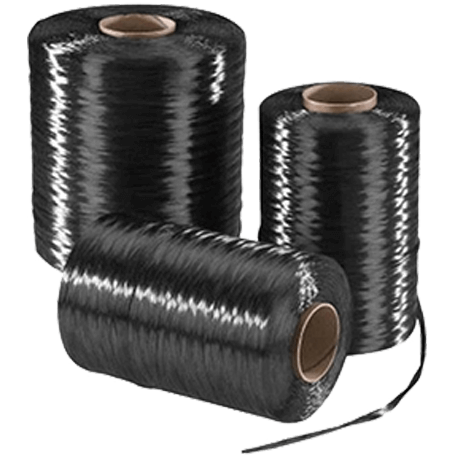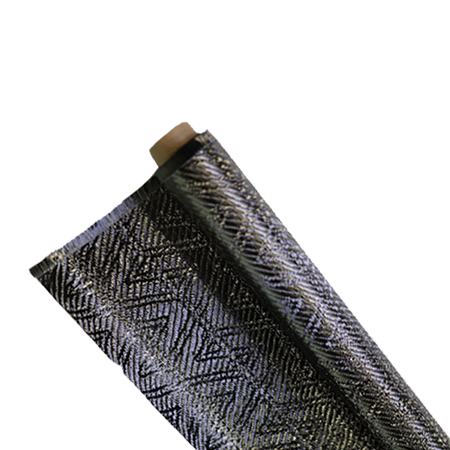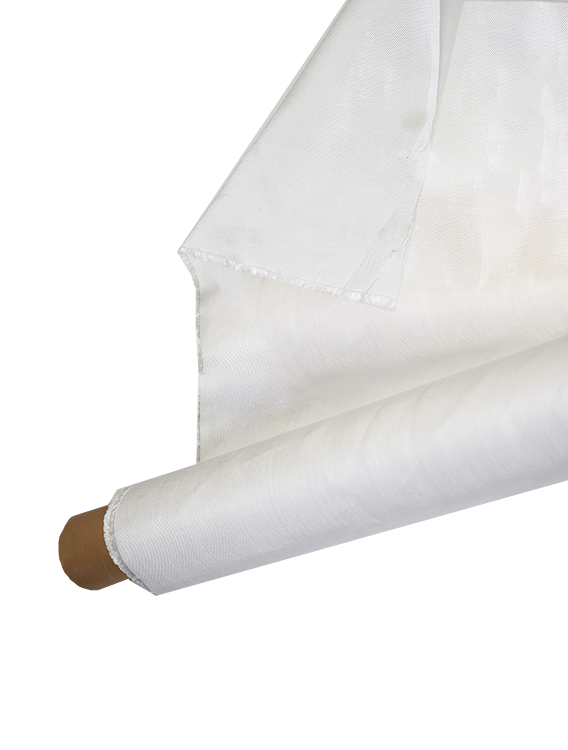Fast-Cure Epoxy Launched for Rapid Tooling Projects
-
Table of Contents
“Fast-Cure Epoxy: Accelerate Your Tooling Projects with Unmatched Speed and Precision!”
Fast-Cure Epoxy has been introduced as a groundbreaking solution for rapid tooling projects, designed to significantly reduce production times while maintaining high-quality results. This innovative epoxy formulation offers quick curing properties, enabling manufacturers to create molds and prototypes in a fraction of the time compared to traditional materials. With its exceptional strength, durability, and versatility, Fast-Cure Epoxy is poised to transform the landscape of rapid prototyping and tooling, catering to industries that demand efficiency and precision. This launch marks a significant advancement in material technology, providing engineers and designers with the tools they need to accelerate their workflows and bring products to market faster than ever before.
Benefits of Fast-Cure Epoxy in Rapid Tooling Applications
The introduction of fast-cure epoxy has revolutionized the landscape of rapid tooling applications, offering a multitude of benefits that significantly enhance efficiency and productivity. One of the most notable advantages of fast-cure epoxy is its ability to drastically reduce curing times, allowing manufacturers to produce tools and prototypes in a fraction of the time traditionally required. This expedited process not only accelerates project timelines but also enables companies to respond more swiftly to market demands, thereby gaining a competitive edge.
Moreover, the rapid curing properties of fast-cure epoxy facilitate a more streamlined workflow. In conventional tooling methods, lengthy curing periods can lead to bottlenecks in production, delaying subsequent phases of the project. However, with fast-cure epoxy, the transition from design to production becomes seamless, as the material reaches its optimal strength and durability in a matter of hours rather than days. This efficiency is particularly beneficial in industries where time-to-market is critical, such as aerospace, automotive, and consumer electronics.
In addition to its time-saving attributes, fast-cure epoxy also offers enhanced mechanical properties that are essential for tooling applications. The formulation of these epoxies is designed to provide superior strength, rigidity, and thermal stability, making them ideal for producing high-quality molds and prototypes. As a result, manufacturers can achieve precise tolerances and intricate designs, which are crucial for the functionality and performance of the final products. This capability not only improves the quality of the tooling but also reduces the likelihood of defects, thereby minimizing waste and rework.
Furthermore, the versatility of fast-cure epoxy is another significant benefit in rapid tooling applications. These epoxies can be tailored to meet specific requirements, such as varying degrees of flexibility, hardness, and chemical resistance. This adaptability allows engineers and designers to select the most suitable formulation for their particular project, ensuring optimal performance under varying conditions. Consequently, fast-cure epoxy can be employed across a wide range of applications, from creating complex geometries in injection molds to producing durable fixtures and jigs.
Another important aspect to consider is the cost-effectiveness of using fast-cure epoxy in rapid tooling. While the initial investment in high-quality epoxy materials may be higher than traditional options, the long-term savings associated with reduced production times and minimized waste can be substantial. By decreasing the time spent on each project and enhancing the overall quality of the tooling, companies can achieve a quicker return on investment. This financial advantage is particularly appealing for small to medium-sized enterprises that may operate on tighter budgets and require efficient solutions to remain competitive.
In conclusion, the benefits of fast-cure epoxy in rapid tooling applications are manifold, encompassing reduced curing times, enhanced mechanical properties, versatility, and cost-effectiveness. As industries continue to evolve and demand for rapid prototyping and tooling increases, the adoption of fast-cure epoxy will likely become more prevalent. By leveraging these advanced materials, manufacturers can not only improve their operational efficiency but also elevate the quality of their products, ultimately leading to greater customer satisfaction and business success. As such, fast-cure epoxy stands as a pivotal innovation in the realm of rapid tooling, poised to shape the future of manufacturing.
Comparing Fast-Cure Epoxy to Traditional Epoxy Solutions

In the realm of manufacturing and prototyping, the choice of materials plays a pivotal role in determining the efficiency and effectiveness of production processes. Among the various options available, epoxy resins have long been favored for their durability, adhesion, and versatility. However, traditional epoxy solutions often come with extended curing times, which can hinder rapid tooling projects. In response to this challenge, the introduction of fast-cure epoxy has emerged as a game-changer, offering significant advantages over conventional epoxy formulations.
To begin with, the most notable difference between fast-cure epoxy and traditional epoxy lies in the curing time. Traditional epoxy systems typically require several hours to days to achieve full hardness, depending on the specific formulation and environmental conditions. This extended timeframe can lead to delays in production schedules, particularly in industries where time-to-market is critical. In contrast, fast-cure epoxy is designed to cure significantly quicker, often within minutes to a few hours, allowing manufacturers to expedite their tooling processes without compromising on quality.
Moreover, the rapid curing capabilities of fast-cure epoxy do not come at the expense of performance. While some may assume that a quicker curing time could result in a weaker bond or inferior mechanical properties, advancements in chemical formulations have ensured that fast-cure epoxies maintain the high strength and durability characteristic of traditional epoxies. This means that manufacturers can achieve the same level of performance in their tooling applications while benefiting from reduced lead times.
In addition to speed and performance, the ease of use associated with fast-cure epoxy is another compelling advantage. Traditional epoxy systems often require precise mixing ratios and careful application techniques to ensure optimal results. This complexity can lead to inconsistencies and potential errors during the application process. Fast-cure epoxy, on the other hand, is often formulated to be more forgiving, allowing for easier mixing and application. This user-friendly nature not only enhances productivity but also reduces the likelihood of costly mistakes, making it an attractive option for both experienced professionals and those new to the field.
Furthermore, the versatility of fast-cure epoxy extends beyond just rapid curing. It can be utilized in a wide range of applications, from creating intricate molds to producing durable prototypes. This adaptability makes it an ideal choice for industries such as automotive, aerospace, and consumer goods, where the demand for quick turnaround times and high-quality results is paramount. As a result, manufacturers can leverage fast-cure epoxy to meet the evolving needs of their clients while maintaining a competitive edge in the market.
In conclusion, the launch of fast-cure epoxy represents a significant advancement in the field of rapid tooling. By comparing it to traditional epoxy solutions, it becomes evident that the benefits of reduced curing times, maintained performance, ease of use, and versatility make it a superior choice for manufacturers seeking efficiency and quality. As industries continue to evolve and the pressure to innovate increases, fast-cure epoxy stands out as a vital tool that can help streamline production processes and enhance overall productivity. Embracing this innovative material not only facilitates faster project completion but also positions manufacturers to better respond to the dynamic demands of the marketplace.
Best Practices for Using Fast-Cure Epoxy in Tooling Projects
The introduction of fast-cure epoxy has revolutionized the landscape of rapid tooling projects, offering manufacturers and engineers a reliable solution for creating high-quality prototypes and production tools in significantly reduced timeframes. However, to fully leverage the benefits of this innovative material, it is essential to adhere to best practices that ensure optimal performance and results. Understanding the properties of fast-cure epoxy is the first step in this process. This type of epoxy is designed to cure quickly, often within hours, allowing for expedited project timelines. Nevertheless, the speed of curing can also present challenges, particularly if the material is not handled correctly.
One of the foremost best practices involves meticulous preparation of the workspace and materials. Before beginning any project, it is crucial to ensure that the work area is clean, organized, and free from contaminants that could compromise the integrity of the epoxy. Additionally, all tools and mixing containers should be prepped and ready for use, as the fast-cure nature of the epoxy leaves little room for delays. Furthermore, it is advisable to measure the components of the epoxy accurately, as improper ratios can lead to incomplete curing or compromised mechanical properties. Using a digital scale for precise measurements can significantly enhance the consistency and reliability of the final product.
Once the materials are prepared, the mixing process becomes paramount. Fast-cure epoxy typically requires thorough mixing to ensure that the hardener and resin are fully integrated. It is essential to follow the manufacturer’s guidelines regarding mixing times and techniques, as inadequate mixing can result in weak spots or uneven curing. To facilitate this process, using a mechanical mixer can be beneficial, especially for larger batches. After mixing, it is advisable to apply the epoxy promptly, as the working time may be limited. This urgency underscores the importance of having a clear plan in place before starting the application.
When applying fast-cure epoxy, the method of application can significantly influence the outcome. For tooling projects, it is often recommended to use a brush or roller for even distribution, ensuring that the epoxy penetrates all areas of the mold or tool being created. Additionally, maintaining a consistent thickness during application is crucial, as variations can lead to inconsistencies in the final product. It is also important to consider the ambient conditions, such as temperature and humidity, as these factors can affect the curing process. Ideally, fast-cure epoxy should be applied in a controlled environment to achieve the best results.
After application, monitoring the curing process is essential. While fast-cure epoxy is designed to set quickly, it is important to allow adequate time for the material to reach its full strength before subjecting it to any stress or load. This waiting period can vary based on the specific formulation of the epoxy and the environmental conditions. Once cured, the tooling can be demolded and inspected for quality. Any imperfections should be addressed promptly, as they can impact the performance of the final product.
In conclusion, utilizing fast-cure epoxy in tooling projects can yield remarkable efficiencies and high-quality results when best practices are followed. By ensuring proper preparation, accurate mixing, careful application, and diligent monitoring of the curing process, manufacturers can maximize the advantages of this innovative material. As the industry continues to evolve, embracing these best practices will be essential for staying competitive and achieving excellence in rapid tooling projects.
Q&A
1. **What is Fast-Cure Epoxy?**
Fast-Cure Epoxy is a specialized resin system designed to cure quickly, allowing for rapid production of tooling and prototypes.
2. **What are the benefits of using Fast-Cure Epoxy in tooling projects?**
The benefits include reduced production time, improved efficiency, and the ability to create high-quality, durable tools and prototypes in a shorter timeframe.
3. **In what industries is Fast-Cure Epoxy commonly used?**
Fast-Cure Epoxy is commonly used in industries such as aerospace, automotive, and manufacturing, where rapid prototyping and tooling are essential.The launch of Fast-Cure Epoxy for rapid tooling projects represents a significant advancement in manufacturing efficiency, enabling quicker production times and enhanced precision. This innovative material not only accelerates the tooling process but also offers improved durability and performance, making it an ideal choice for industries requiring rapid prototyping and short lead times. Overall, Fast-Cure Epoxy is poised to transform the landscape of rapid tooling, providing businesses with the tools necessary to meet the demands of a fast-paced market.











